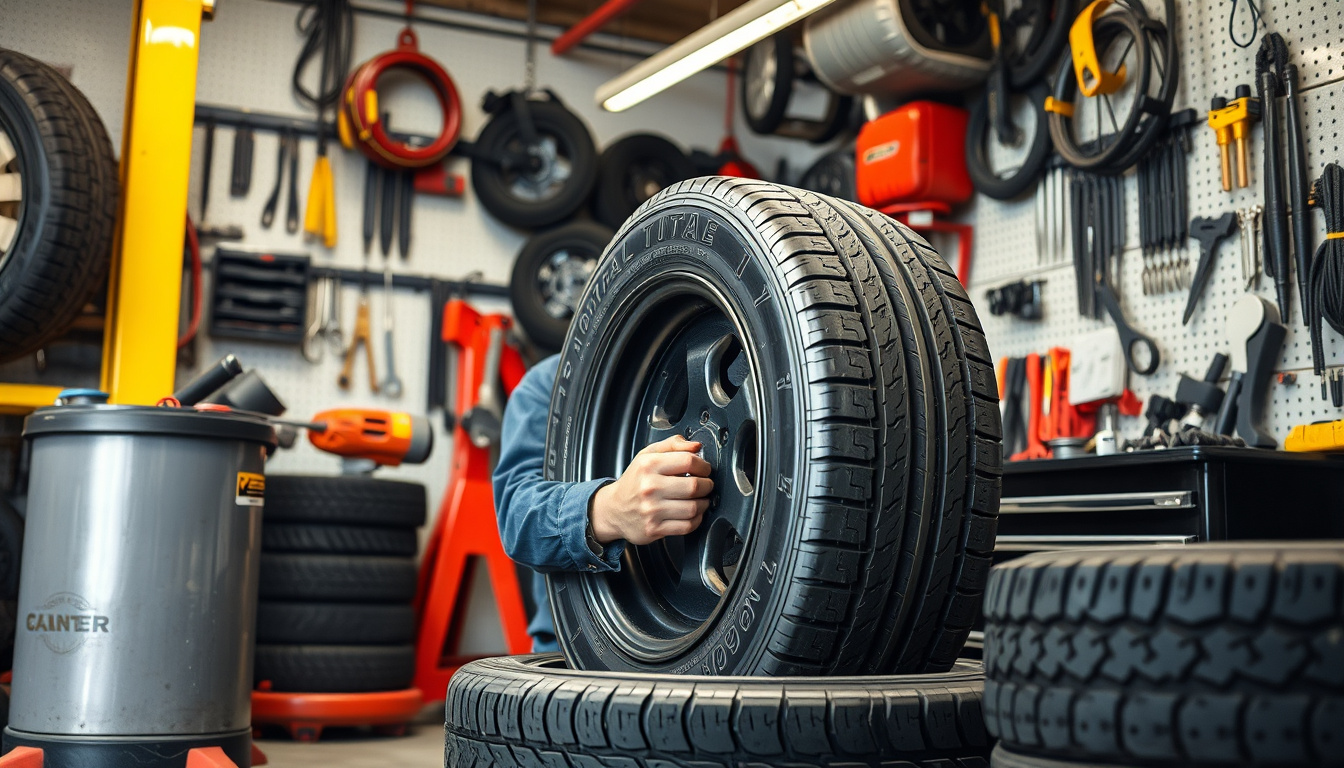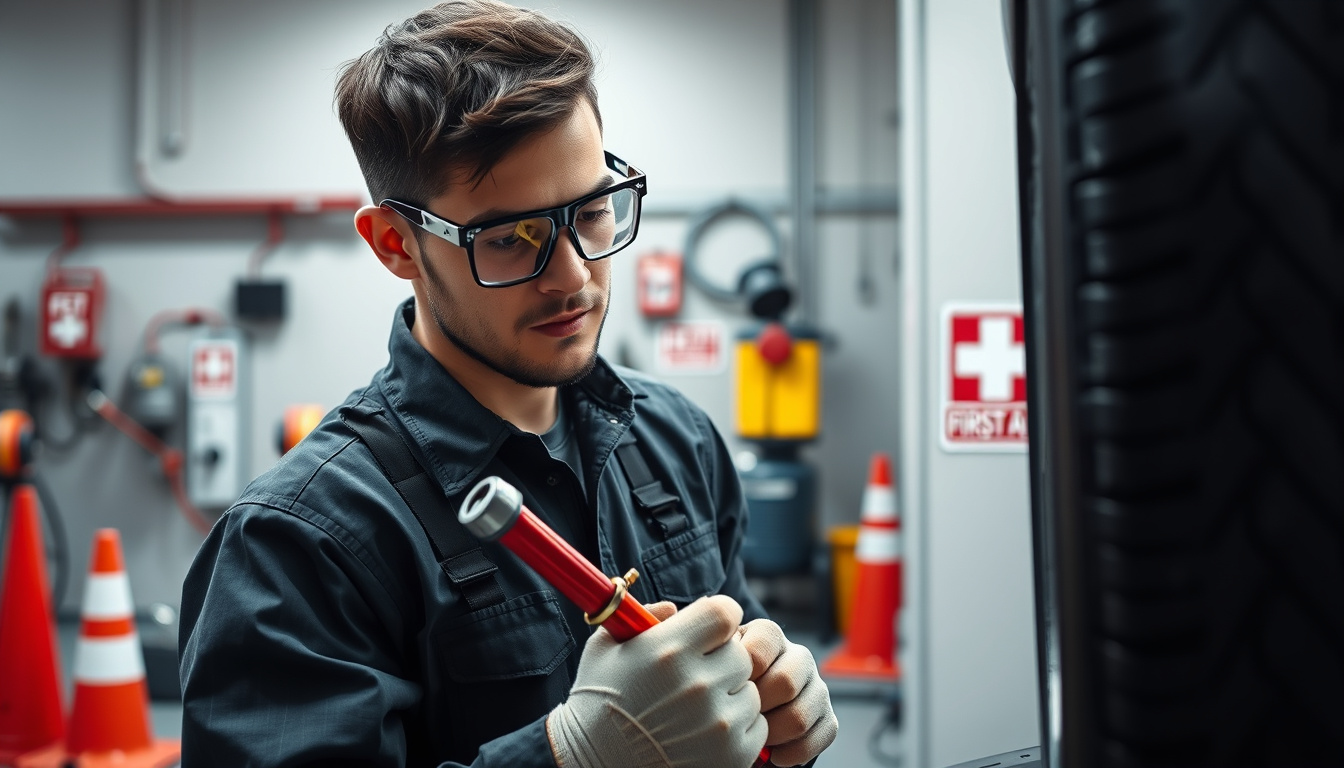Ultimate Puncture Repair Guide: Fix Your Tires Like a Pro
Have you ever been stranded on the side of the road due to a flat tire?
It can be a frustrating experience, but learning how to address tire punctures can turn you into a roadside hero.
In this ultimate puncture repair guide, we’ll explore the ins and outs of tire punctures, providing you with essential knowledge and tools to effectively repair your tires like a pro.
Whether you’re a seasoned DIY-er or a novice looking to enhance your skills, this guide will empower you to handle tire punctures with confidence.
Let’s dive into the world of tire maintenance and repair!

Key Takeaways
- Tire punctures can result from various causes including sharp objects and wear and tear.
- Having the right tools is crucial for effectively repairing a tire puncture.
- Follow a step-by-step approach for tire repairs to ensure a safe and effective fix.
- Always prioritize safety by wearing protective gear and working in a well-ventilated area during repairs.
- Regular maintenance can help reduce the likelihood of future tire punctures.
Understanding Tire Punctures: Common Causes and Types
Tire punctures can be a frustrating experience for any driver, but understanding the common causes and types of punctures can help mitigate the inconvenience.
A tire puncture occurs when an object penetrates the tire, creating a hole that allows air to escape.
Common culprits include nails, screws, glass shards, and other sharp debris found on roads.
Additionally, wear and tear from poor road conditions can lead to sidewall and tread punctures.
Knowing the types of punctures is crucial; for instance, a puncture in the tread area can often be repaired, while sidewall damage typically necessitates tire replacement.
For a comprehensive approach to maintaining your tires, refer to our puncture repair guide, which outlines effective methods for assessing, repairing, or replacing damaged tires to ensure your safety on the road.
Essential Tools for a Successful Puncture Repair
When it comes to effectively handling tire issues, a well-detailed puncture repair guide can be invaluable.
To embark on a successful repair, you’ll need essential tools that streamline the process and ensure durability.
First and foremost, a quality tire repair kit is essential; these kits typically contain rubber plugs, a reamer, and a plug insertion tool, all fundamental for sealing small punctures.
Additionally, a reliable air compressor or portable tire inflator is crucial for re-inflating your tire after the repair is completed.
Don’t forget safety goggles and gloves to protect your hands and eyes while working.
Lastly, a pressure gauge will help you monitor and maintain the correct tire pressure, which is vital for optimal performance and safety.
By equipping yourself with these essential tools and following your puncture repair guide, you can confidently tackle tire repairs and extend the life of your tires.
‘The only way to do great work is to love what you do.’ – Steve Jobs
Step-by-Step Guide to Repairing a Tire Puncture
When encountering a flat tire due to a puncture, knowing how to properly address it can save you time and money.
This puncture repair guide will walk you through a simple, step-by-step process to effectively repair your tire without the need for professional assistance.
First, ensure you have the essential tools on hand, including a tire repair kit, an air compressor or pump, and safety gear.
Begin by locating the puncture; inspect the tire carefully for visible objects like nails or screws.
Once identified, remove the object carefully using pliers to avoid further damage.
Next, clean the punctured area with a scraper from the repair kit to prepare the surface for the patch.
Apply a small amount of rubber cement, then firmly place the plug into the puncture using the insertion tool.
Once the plug is secured, trim any excess material with a knife.
Inflate the tire back to the recommended pressure and check for leaks by applying soapy water to the repaired area—bubbles will indicate escaping air.
Following this puncture repair guide will ensure your tire is back on the road safely and efficiently.

Safety Precautions to Take During Tire Repairs
When it comes to tire maintenance, following a comprehensive puncture repair guide is essential not only for ensuring the longevity of your tires but also for your personal safety.
One of the first safety precautions to take during tire repairs is to ensure that the vehicle is parked on a flat, stable surface.
This helps prevent any accidental rolling that could lead to injury.
Additionally, always use wheel chocks to secure the vehicle, especially if it’s on a slope.
Before beginning the repair, it’s critical to wear appropriate safety gear, such as gloves and safety glasses, to protect against sharp objects and debris that may be present.
Furthermore, when using tools, make sure they are in good condition and suitable for the job, as using damaged tools can lead to accidents.
Lastly, be aware of the tire pressure; overinflated tires may burst if mishandled, while underinflated tires might not provide a secure platform for repair.
By adhering to these safety measures outlined in any puncture repair guide, you can ensure a successful and secure tire repair process.
When to Seek Professional Help for Tire Issues
Understanding when to seek professional help for tire issues is crucial for ensuring your safety on the road.
While minor problems, such as a small puncture, can often be resolved with a puncture repair guide, there are specific situations that warrant the expertise of a trained technician.
If your tire has visible damage beyond simple punctures, such as sidewall bulges, deep cuts, or irregular wear patterns, it’s advisable to consult a professional.
Additionally, if you experience a tire that frequently loses air pressure or shows significant vibrations while driving, these could be signs of more severe issues that require expert assessment.
Following a puncture repair guide can help in basic repairs, but recognizing the limits of DIY fixes ensures you maintain optimal tire performance and safety.
Frequently Asked Questions
What types of tire punctures can be repaired at home?
Most small punctures in the tread area, such as those caused by nails or foreign objects, can often be repaired at home.
However, punctures larger than 1/4 inch or those on the sidewall typically require professional assistance.
What essential tools do I need for tire puncture repair?
You will need a tire repair kit, which usually includes tools such as a tire lever, patch or plug, reamer, and sealant.
Other helpful items include a compressor or tire inflator and safety gloves.
What safety precautions should I take while repairing a tire?
Always ensure that the vehicle is parked on a flat surface and securely supported with jack stands.
Wear safety glasses and gloves, and avoid placing your body under the vehicle when changing or repairing tires, to prevent injury in case of equipment failure.
How can I tell if a tire puncture is too severe to repair?
If the puncture is larger than 1/4 inch, located on the sidewall, or the tire has multiple punctures, it is often best to consult a professional tire repair shop for assessment and replacement options.
What maintenance tips can help prevent future tire punctures?
Regularly check tire pressure, inspect tires for debris or wear, rotate tires as recommended, and avoid driving over potholes or sharp objects to extend the life of your tires and reduce the risk of punctures.